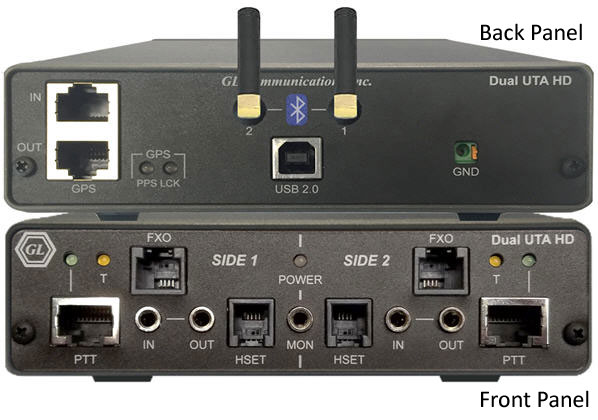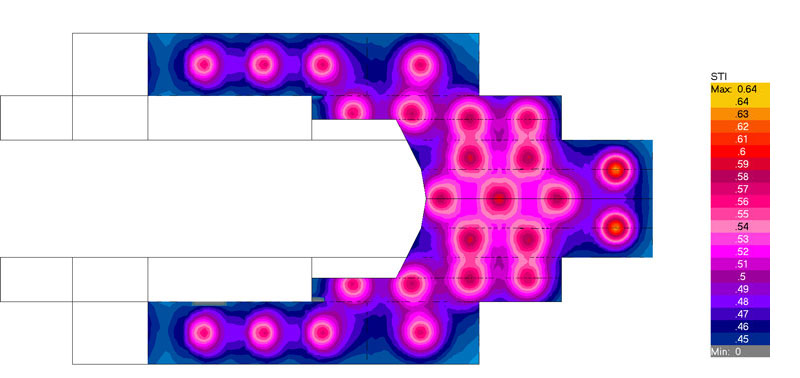Public Address System Performance Evaluation
Welcome to a May 2017 issue of GL's newsletter. In this issue, we focus on Performance Evaluation of Public Address (PA) Systems. In the past, GL has been privileged to test, design, and author specifications for transit agency PA systems. This newsletter, however, will focus on how to properly evaluate the effectiveness of an existing system, identify deficiencies and recommend improvements.

GL Field Worker Performing Speech Transmission Index (STI) testing
Overview
Over the past couple of decades, PA systems have added safety and security features in addition to displaying and broadcasting operational information. Some of these changes have been due to fire system evacuation requirements. Rail stations/platforms, large airports areas and shopping malls are all examples where PA systems play an important role in alerting crowds during critical emergency situations. Many of these example locations have older PA systems that have fallen victim to time and environmental elements, dramatically degrading their effectiveness. It is also possible that the original design and installation did not provide adequate intelligibility and coverage. Even new installations may require field testing to verify the expected system results.
The evaluation methods and services discussed below should be strongly considered when the intelligibility and coverage of an existing PA system is in question or when new installations need to be verified for effectiveness.
Methods of Evaluation:
STI Measurements
Speech Transmission Index (STI) testing is a method of measuring speech intelligibility and is a widely-accepted algorithm in the PA system community. This testing is performed by transmitting a reference signal, known as the Speech Transmission Index for Public Address systems (STIPA) signal, through the PA system and measuring the STI at every desired target location. These measurements are usually taken using a handheld device and each measurement can usually be executed in 15-30 seconds.
GL has provided STI testing services to multiple transit agencies, evaluating PA systems at rail stations and within rail vehicles. It is important to use the latest revision of STI standard (IEC 60268-16:2011 (edition 4)), as improvements are actively being made. Usually a 400 sq ft grid is established within the intended coverage area of the PA system and multiple measurements are methodically taken within each grid. Careful recording of the testing results is collected and presented in a detailed report.
The following Key Indicators are generally collected by GL at each location:
- Ambient Noise Level (ANL): A measure of the background audio noise level (in dB)
- Sound Pressure Level (SPL): A measure of audio loudness (in dB)
- Speech Intelligibility Index (STI): A measure of the intelligibility of the PA voice
- Signal-to-Noise Ratio (SNR) is a measure of the relative difference between audio level and background noise. It is calculated by: SNR = SPL – ANL
These results alone will provide an excellent evaluation of the PA Systems intelligibility and effectiveness, but they are also very important to validate the accuracy of an acoustic model, which can be used to simulate and predict potential system improvements. Note: More details to follow on acoustic modelling.
Visual Inspection and other Operational Checks
Each speaker should be visually examined for obvious problems, sometimes due to environmental factors or age. Although a non-functioning speaker will be apparent while doing STI testing, GL performs individual speaker evaluations using Sound Pressure Level Meters. Other PA system components should be verified for operational effectiveness. These include components like, amplifiers, DSP units and fire alarm panels, which are commonly integrated with PA systems.
Transmission Network Evaluation
PA Systems are often designed where a centralized control center is responsible for initiating announcements to remote locations. These messages are sometimes integrated with Variable Message-Sign (VMS) to visual alert customers and passengers. An example is a Rail Operators Control Center initiating live emergency announcements to remote stations on the rail line. The communications network between the two locations should be properly evaluated to ensure quality and integrity.
A Transmission Study should be completed. This Transmission Study will include end-to-end voice quality measurements to evaluate the quality of live voice announcements and identify potential gaps or anomalies in the transmission network. This is often performed by GL personnel using home-grown commercially available hardware and software products. These products are designed to meet industry-standard telecommunications Voice Quality Algorithms, such as ITU-P.862 (PESQ) and ITU-P.863 (POLQA).

GL’s Dual UTA Hardware Equipment Used for Voice Quality Testing
Modeling and Improvements Recommendations
Acoustic modeling methods within software can aid designers and evaluators of PA systems. Establishing the accuracy and reliability of the existing location’s acoustic model is critical before introducing any potential changes to the PA system. These changes are often very expensive and a properly constructed model can dramatically increase the success rate of the changes.
Many inputs are factored into the modeling. These inputs include items such as physical location dimensions, surrounding material surfaces, speaker locations, speaker models, etc. GL is well versed running acoustic modeling software and uses a very popular, well-respected package. Enhanced Acoustic Simulator for Engineers (EASE), is the software package used by GL engineers. This allows three-dimensional modeling and simulation of the acoustical environment. As mentioned before, the variables within the software package should be configured and confirmed by actual field measurements. The accuracy of the existing location’s model is critical when recommending potential changes to the system.
Once the model has been verified and proven accurate, tweaking of variables within the acoustical environment can be simulated. Examples include, adding speakers, an acoustical wall or modifying the ceiling material. These variables can be entered in the model, and then a prediction of the STI improvement can be made. This can happen before physically deploying installation personnel and equipment.

Model of Rail Station Showing Existing STI Values
 Back to Newsletter Index Page
Back to Newsletter Index Page